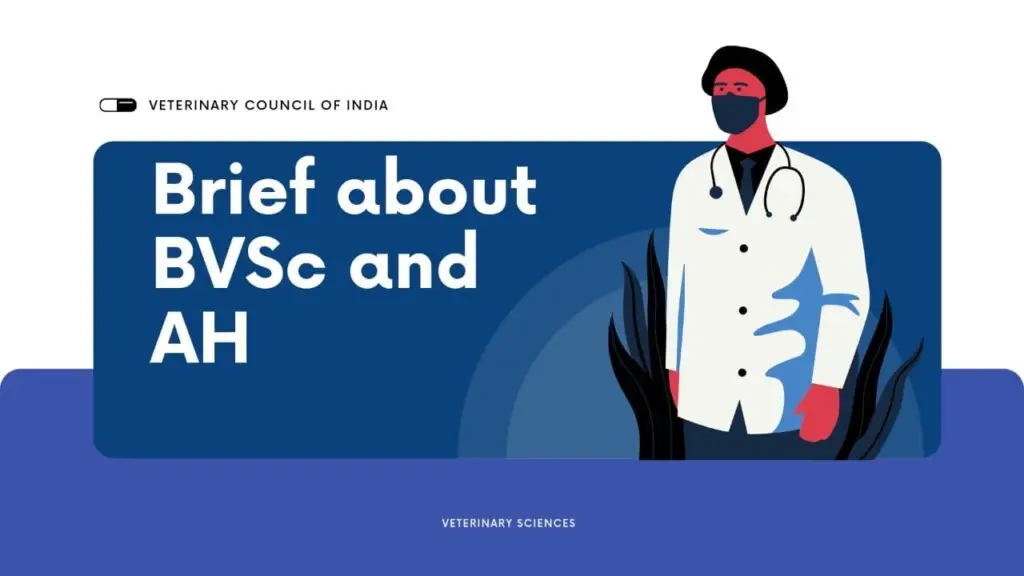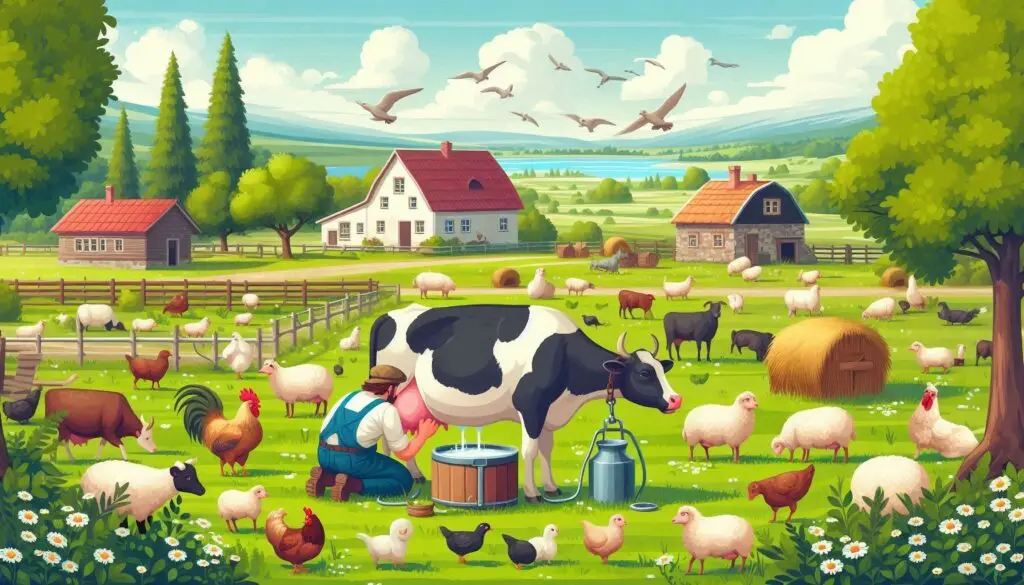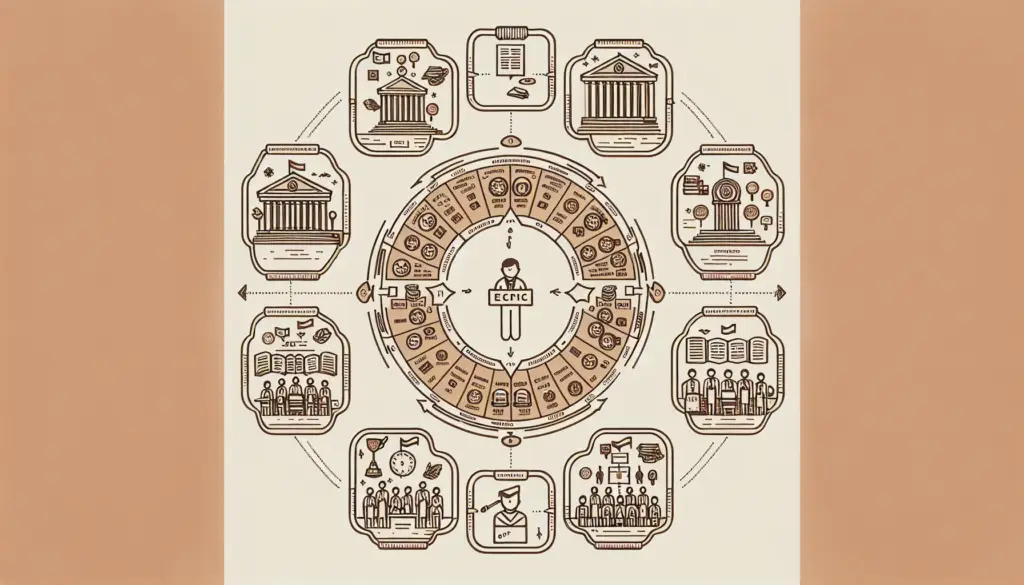Understanding BVSc & AH Degree

Understanding Veterinary Degrees
When stepping into the realm of veterinary medicine, understanding the different types of veterinary degrees is crucial. This knowledge equips future veterinarians with the insights needed to navigate their educational paths successfully.
BVSc vs DVM Degrees
The Bachelor of Veterinary Science (BVSc) and the Doctor of Veterinary Medicine (DVM) are the two primary degrees awarded in the field of veterinary medicine. Despite serving the same purpose, there are notable distinctions between them.
- Primarily awarded in countries like the UK, Australia, and India.
- Graduates from a BVSc program are recognized as veterinarians in the US if they have graduated from an American Veterinary Medical Association (AVMA) accredited school and passed the North American Veterinary Licensing Examination. (Wikipedia)
- Generally a 5-year course, though it can vary. For example, Cambridge Veterinary School offers a unique 6-year course that grants a BA after 3 years and the VetMB after 6 years. (Wikipedia)
DVM (Doctor of Veterinary Medicine)
- Mainly awarded in the United States and Canada.
- Considered equivalent to the BVSc, but the naming convention and some aspects of the curriculum might differ.
Typically requires 4 years of study post-bachelor’s degree.
Global Variations in Veterinary Education
Veterinary education varies significantly across the globe, influenced by regional regulations, educational standards, and professional requirements.
| Region | Degree | Duration | Key Points |
|---|---|---|---|
| India, UK, Australia | BVSc | 5-6 years | Includes comprehensive clinical training, recognized by AVMA if accredited. |
| USA, Canada | DVM | 4 years post-bachelor’s | Focuses on applying veterinary science in the medical field. |
| EU | Varies | Typically 5-6 years | Governed by Directive 2005/36/EC, ensuring standardized education. |
In the European Union, veterinary degrees are standardized across member states by Directive 2005/36/EC (Wikipedia). This directive establishes Union-wide standards for veterinary medical education, promoting consistency and quality.
Graduates from non-EU countries, including those with a BVSc degree, may need to meet additional requirements to practice in the EU. This often involves certification exams and additional training.
Path to Becoming a Veterinary Doctor
Becoming a veterinary doctor involves several important steps, including meeting specific educational requirements and obtaining the necessary licensing and accreditation. This section provides a comprehensive overview of these key processes.
Educational Requirements
To become a veterinary doctor, one must first acquire the appropriate educational background. The path typically begins with a Bachelor of Veterinary Science and Animal Husbandry (BVSc & AH) degree. This qualification is essential for pursuing a career in veterinary medicine.
Steps to Achieve BVSc & AH:
- Complete High School Education (10+2): Students must have a background in science, with a focus on subjects such as biology, chemistry, and physics.
- Pass NEET Exam: The National Eligibility cum Entrance Test (NEET) is mandatory for admission into a government veterinary college.
- Enroll in a BVSc & AH Program: Several top colleges in India, such as the Indian Veterinary Research Institute and Tamil Nadu Veterinary & Animal Sciences University, offer this degree.
- Complete the BVSc & AH Program: This course generally spans five and a half years, including internships and practical training.
For those interested in pursuing further specialization, it is possible to obtain a Doctor of Veterinary Medicine (DVM) degree after completing the BVSc program (AVMA).
Licensing and Accreditation
After completing the educational requirements, aspiring veterinary doctors must obtain the necessary licenses and certifications to practice.
Steps to Obtain Licensing:
- Graduate Degree Verification: Ensure the degree is recognized by the appropriate veterinary council or board.
- Pass Licensing Examinations: In countries like the United States and Canada, graduates must pass the North American Veterinary Licensing Examination (NAVLE) (AVMA).
- Registration with Veterinary Councils: For instance, in South Africa, graduates must register with the South African Veterinary Council (Wikipedia).
- Continuing Education: Veterinary professionals are often required to engage in ongoing education to maintain their licenses. This can include additional coursework, workshops, and conferences (Leverage Edu).
The table below highlights the different licensing requirements in various regions:
| Country | Licensing Examination | Veterinary Council/Board Registration |
|---|---|---|
| United States | NAVLE | State Veterinary Boards |
| Canada | NAVLE | Provincial Veterinary Boards |
| United Kingdom | No specific license exam | Royal College of Veterinary Surgeons (RCVS) |
| South Africa | North American exam (if applicable) | South African Veterinary Council |
Career Insights for Veterinary Doctors
Average Salaries
Understanding the financial prospects in the veterinary field is essential for aspiring veterinary doctors. Salaries can vary based on experience, location, and the type of employment.
The average salary of a freshly graduated Veterinary Doctor in India ranges from ₹28,000 to ₹30,000 per month. More experienced veterinary doctors, especially those employed by the government, can expect monthly salaries between ₹50,000 and ₹1,00,000.
| Position | Average Monthly Salary (₹) | Average Annual Salary (₹) |
|---|---|---|
| Fresh Graduate | 28,000 – 30,000 | 3,36,000 – 3,60,000 |
| Veterinary Doctor (Govt) | 50,000 – 1,00,000 | 6,00,000 – 12,00,000 |
| Veterinary Doctor (Overall Avg) | 22,65,000 |
For those planning their future, it’s useful to see the variety of salaries across different career stages.
Prominent Veterinary Colleges in India
Choosing the right educational institution is a crucial step toward a successful career in veterinary medicine. Here is a list of some of the top colleges in India offering the BVSc & AH degree:
| College Name | Location |
|---|---|
| Indian Veterinary Research Institute | Izzatnagar, Bareilly |
| Guru Angad Dev Veterinary and Animal Sciences University | Ludhiana, Punjab |
| Tamil Nadu Veterinary & Animal Sciences University | Chennai, Tamil Nadu |
| College of Veterinary Science and Animal Husbandry | Mathura, Uttar Pradesh |
| Bombay Veterinary College | Mumbai, Maharashtra |
These institutions are renowned for their comprehensive curriculum and state-of-the-art facilities. Many of these colleges also offer excellent placement opportunities, enhancing the prospects for new graduates. Understanding the academic curriculum of BVSc & AH provides further insights into what these programs entail.
For further details on joining these esteemed colleges, refer to our guide on veterinary education.
Academic Curriculum for BVSc & AH
Understanding the academic structure and syllabus of the BVSc & AH program is crucial for aspiring veterinarians. This section provides an overview of the course structure and syllabus, ensuring candidates are well-prepared for their academic journey.
Course Structure
The Bachelor of Veterinary Science and Animal Husbandry (BVSc & AH) is typically a 5-year undergraduate degree, which includes 4.5 years of academic sessions and a 6-month mandatory internship.
| Course Duration | Academic Sessions | Internship |
|---|---|---|
| 5. years | 4.5 years | 6 months |
Some universities may offer a shorter course duration if the candidate holds a relevant prior degree, reducing it to around 4 years (Wikipedia).
Syllabus Overview
The BVSc & AH syllabus covers a wide range of subjects, structured across several semesters from I to IX. The coursework includes both theoretical and practical components, and it is essential for students to gain comprehensive knowledge and hands-on experience.
| Semester | Subjects |
|---|---|
| I | Anatomy, Physiology, Biochemistry, LPM |
| II | Histology, General Pathology, Animal Genetics |
| III | Pharmacology, Parasitology, Animal Nutrition |
| IV | Microbiology, Immunology, Animal Breeding |
| V | Surgery, Clinical Medicine, Reproductive Biology |
| VI | Public Health, Animal Husbandry, Biostatistics |
| VII | Veterinary Preventive Medicine, Veterinary Clinical Practice |
| VIII | Large Animal Clinical Practice, Small Animal Clinical Practice |
| IX | Internship (Practical Application) |
Detailed insights into subjects such as anatomy, physiology, biochemistry, pharmacology, and more can be obtained throughout the curriculum. Each subject aims to build a strong foundation in veterinary science and animal husbandry.
Navigating the Competitive Veterinary Field
Admissions Process
The admissions process for the Bachelor of Veterinary Science and Animal Husbandry (BVSc & AH) degree is highly competitive due to the limited number of seats available and the rigorous academic standards set by veterinary schools.
In India, aspirants must clear the National Eligibility cum Entrance Test (NEET) to pursue a BVSc & AH course. NEET is a centralized examination and serves as the primary pathway to qualify for entry into veterinary programs (Leverage Edu).
| Admission Step | Description |
|---|---|
| NEET Examination | National Eligibility cum Entrance Test required for admission. |
| Academic Requirements | Completion of higher secondary education (12th grade) with subjects including Physics, Chemistry, and Biology. |
| Application Process | Submission of NEET scores, academic transcripts, and other required documentation to preferred veterinary schools. |
| Selection | Based on NEET scores, academic performance, and sometimes personal interviews. |
| Enrollment | Final admission into the program post verification of documents and payment of fees. |
The BVSc & AH program spans 5.6 years, which includes 5 years of academic sessions and 6 months of a mandatory internship. This detailed curriculum is designed to provide comprehensive knowledge and practical experience (Adda247).
Board Certification and Licensure
Board certification and licensure are critical steps to practice as a veterinary doctor. These requirements vary by location and must be met to ensure one’s ability to legally practice veterinary medicine.
United States and Canada
In the United States and Canada, veterinary graduates must pass the North American Veterinary Licensing Examination (NAVLE). This exam assesses the knowledge and skills necessary to practice veterinary medicine safely and effectively. The NAVLE is typically taken during the final year of veterinary school.
| Component | Description |
|---|---|
| Licensing Exam | North American Veterinary Licensing Examination (NAVLE). |
| Prerequisites | Graduation from an accredited veterinary program (DVM or equivalent BVSc). |
| Application | Submission of transcriptions, application forms, and fees. |
| Licensing | Required to legally practice veterinary medicine in North America. |
India
In India, graduates of the BVSc & AH program must register with their respective State Veterinary Council to legally practice. This registration is necessary to ensure compliance with national veterinary standards.
| Component | Description |
|---|---|
| Registration | State Veterinary Council registration post-graduation. |
| Licensing Authority | Veterinary Council of India (VCI). |
| Application | Submission of graduation documents, proof of internship completion, and application fees. |
| Licensing | Required to practice veterinary medicine and hold a professional designation. |
Veterinary education and licensure requirements can differ greatly across countries. For instance, some veterinary schools in Afghanistan offer only Bachelor of Science (BS) degrees, which allow graduates to practice in their home country but not to take licensing examinations required abroad (Wikipedia).
Understanding the admission process and the significance of board certification is essential for a successful career in veterinary medicine. For more details on the VLDA course or specifics on practicing veterinary medicine in Haryana, visit our dedicated pages on vlda course details in hindi.
Prospects and Opportunities in Veterinary Medicine
The field of veterinary medicine offers a wide range of prospects and opportunities for those holding a Bachelor of Veterinary Science and Animal Husbandry (BVSc & AH) degree.
Job Outlook
The job outlook for veterinary doctors is promising. Veterinarians have diverse career opportunities within private practices, government agencies, research institutions, and educational facilities. Globally, the demand for veterinary services is expected to see steady growth, driven by increases in pet ownership, livestock production, and the need for animal healthcare and disease prevention.
In India, upon completion of a BVSc & AH degree, veterinarians can find employment in various sectors:
| Sector | Potential Roles |
|---|---|
| Private Practice | Small Animal Practitioner, Large Animal Practitioner |
| Government | Animal Husbandry Departments, Public Health Officials |
| Research | Veterinary Research Scientists, Academic Researchers |
| Education | Veterinary Professors, Lecturers |
| Industry | Pharmaceuticals, Animal Nutrition |
Continuing Education Requirements
Veterinary medicine is a field that is constantly evolving with advancements in technology, research, and treatment methods. To maintain licensure and stay updated with current practices, veterinary doctors need to engage in continuing education.
In many countries, including the United States, veterinarians must earn a specified number of continuing education credits annually to retain their licensure. This education can be obtained through various means:
- Attending veterinary conferences and workshops
- Completing online courses and webinars
- Participating in hands-on training sessions
- Engaging in academic research and publishing findings
Continuing education ensures that veterinarians remain proficient and knowledgeable about the latest developments and best practices in veterinary care. For more details on specific requirements, veterinarians can refer to resources from their local veterinary associations or regulatory bodies.
Veterinarians looking to further specialize can consider pursuing additional certifications in areas such as veterinary surgery, dermatology, or cardiology. This not only enhances their expertise but also opens up opportunities for higher earning potential and more specialized roles.
For additional resources related to veterinary licensure and exam preparations, you can explore our articles on NAVLE and continue expanding your knowledge base.
Related Internal Links:
- Learn about the NAVLE and its importance in veterinary licensing.
- Explore VLDA course details for further educational opportunities.






Responses